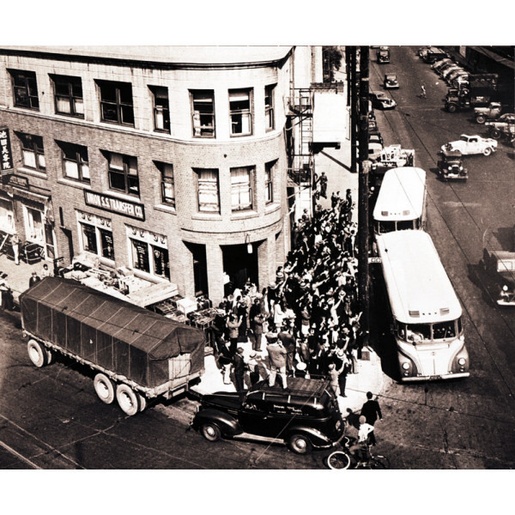Jack Iwata Collection

|
||
| Licensing | ||
Jack Iwata was born in Seattle, Washington, but grew up in Hiroshima Prefecture, Japan. He returned to the United States when he was 16 years old, and attended Whittier College in Whittier, California.
Jack began to work with famous photographer, Toyo Miyatake, in 1937. He continued to work with him during World War II, throughout their time together at the Manzanar concentration camp, as well as after they left the camps.
After the bombing of Pearl Harbor in 1942, Jack and his wife were forced to evacuate their home, and they were placed at the concentration camp in Manzanar, California. There, Jack continued to photograph people and places, and thus documented the activities of everyday camp life. It is because of Jack's photographs of Manzanar, and later of the Tule Lake concentration camp, that we have a glimpse into the life of a Japanese American person during World War II.
This collection features a selection of Jack's photographs from Manzanar and from Tule Lake. They showcase activities such as talent shows, mochi tsuki (making mochi), graduation ceremonies, group meetings and more. This collection shows the reality that was Manzanar, the reality that was Tule Lake. Please browse, read, reflect and remember. To see the rest of Jack Iwata's photographs, plese visit The Japanese American National Museum Web site.
Copyright is held by the Japanese American National Museum. Short-term educational use with limited circulation is permitted. For all other uses, please contact the Hirasaki National Resource Center at the Japanese American National Museum hnrc@janm.org
































 eishida
eishida
 UCLA Nikkei Student Union Culture Night 2008
UCLA Nikkei Student Union Culture Night 2008 The Sculpture of Ruth Asawa: Contours in the Air - Audio Tour
The Sculpture of Ruth Asawa: Contours in the Air - Audio Tour Wakatay Restaurant-Peruvian Nikkei Cuisine
Wakatay Restaurant-Peruvian Nikkei Cuisine 2007 Gardena Buddhist Church Obon
2007 Gardena Buddhist Church Obon Frank Kikuchi
Frank Kikuchi Hisako Hibi
Hisako Hibi San Jose Taiko and CAVA - 1st and Central Summer Concerts 2007
San Jose Taiko and CAVA - 1st and Central Summer Concerts 2007 2007 Higashi Honganji Buddhist Temple Obon
2007 Higashi Honganji Buddhist Temple Obon Landscaping America: Beyond the Japanese Garden - Timeline
Landscaping America: Beyond the Japanese Garden - Timeline Jack Iwata Collection
Jack Iwata Collection
 Journal feed
Journal feed
